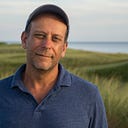Member-only story
How to Stop Mercury Polluters
The story of one scientist’s quest to save the birds he loves

It was just another sweltering summer afternoon gathering blood samples from Shenandoah Valley birds when the news came in. The ornithologist Dan Cristolhad been conducting a preliminary assessment funded by DuPont to determine to what degree the company’s pollution of the watershed might have affected the avian community. DuPont was facing potential legal action and had cautiously agreed to one summer of funding for a small team to gauge just how expensive fixing the damages might be. True to his nature, Cristol hadn’t been tentative in his research. He and his students had skulked into stream-bank kingfisher nests, cornered screech owls near bridges, and mist-netted dozens of species of songbirds. Using tiny needles, they’d extracted drops of bird blood before gently releasing their subjects back into the wild. Then they’d shipped their samples to a toxicology lab at Texas A&M, and watched as their funding dribbled away at a rate of $55 per analyzed sample.
Now as the sun blazed over the South River, a major tributary of the mighty Shenandoah, and waves of heat rose up from the newly mown hayfields, Cristol opened an email from the lab and read the first test results.
“Holy fucking shit,” one of the students cried out.
“I rechecked the numbers about five times to make sure,” Cristol recalls. “We were being funded by the responsible party, so I figured DuPont would look at what we’d found and say, ‘OK, thanks but no thanks, we’ve seen enough.’ I was worried that after this tantalizing glimpse we would not get to learn what was really going on. But to their credit, everyone just kept moving forward and letting us propose to answer each new question that arose.”
Cristol’s research has ultimately perfected a way of holding major polluters accountable for something as profound as it has long been intangible: a means to calculate and seek reparations for bird years lost.
Cristol and his students had discovered that the DuPont mercury spill had penetrated much further into the avian food web than anyone had…
